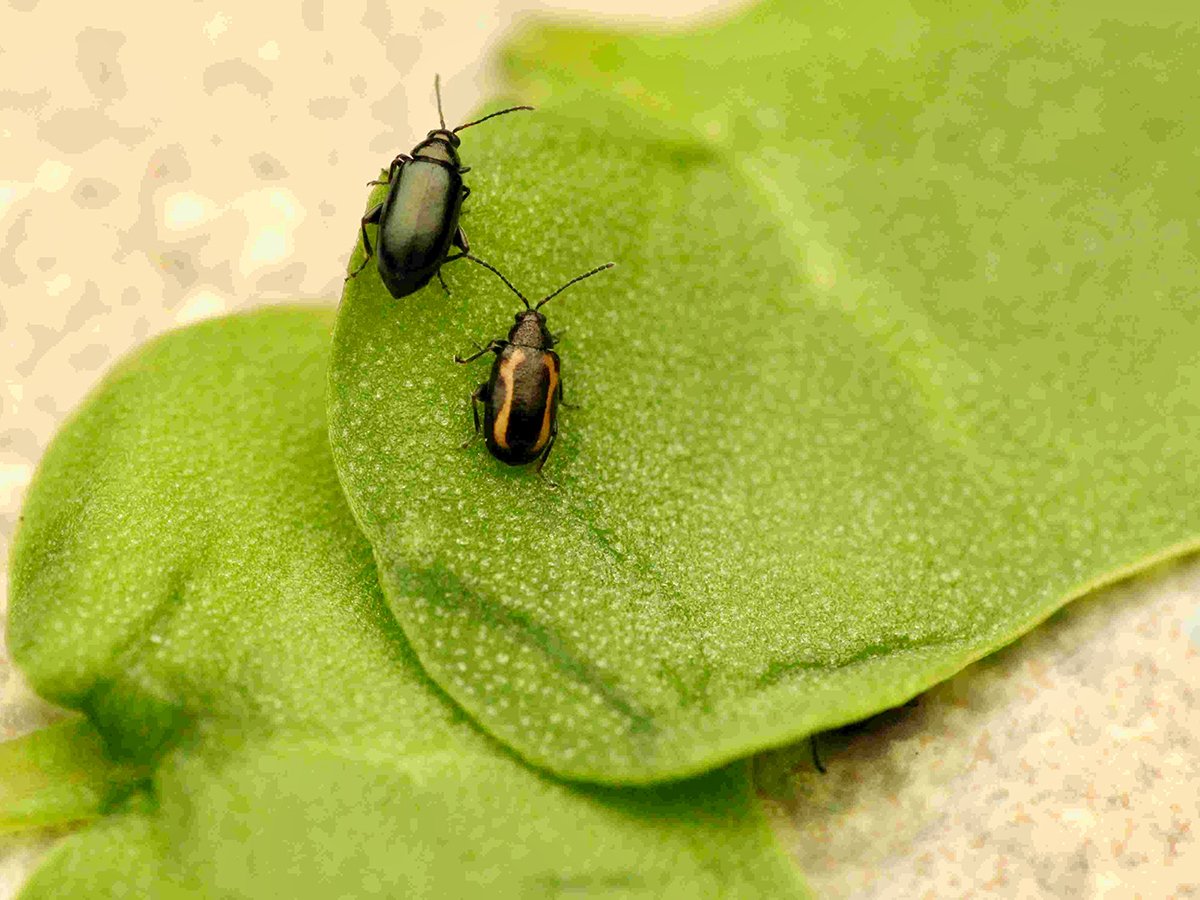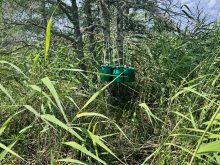ROCKY MOUNTAIN HOUSE, Alta. — Conrad and Sandy Siewert know there is nothing fast about growing Christmas trees in Alberta.
The couple started planting trees near Rocky Mountain House in 2003 and will sell their first harvest this winter.
The number of years before growers see income is a huge hurdle when trying to expand the industry, Conrad Siewert said during a stop on an agricultural tour organized by Clearwater County.
“For many, many people, it is very much a deterrent. There is no financial return for a number of years. It is a long-term process,” he said.
Read Also

Research looks to control flea beetles with RNAi
A Vancouver agri-tech company wants to give canola growers another weapon in the never-ending battle against flea beetles.
However, the long-term investment was a good fit with the Siewerts’ plan for early retirement.
“I am not looking at it to be a full-time job, but something to help out when I retire. I am working on it subsidizing my pension,” he said.
For now, they get the work without the income.
Siewert said his interest in trees began shortly after high school graduation in British Columbia when he worked for the province’s forestry department. A move to Alberta put the idea of a tree farm on hold until the couple bought 31 acres of land in 2001.
They planted 500 scotch pines in 2003 and another 500 the following year. Then the deer moved in and nibbled the tops off all the newly planted seedlings.
The Siewerts responded by building a deer-proof fence around the tree field.
The couple plants 200 new trees a year with roughly an 80 percent survival rate. Siewert estimates 4,000 to 5,000 trees now grow in the fenced area.
A combination of herbicide and mowing controls weeds.
The seedlings arrive in styrofoam block containers, where they are kept for a year before being transferred to the field. Some of the trees are moved to pots and sold as landscape trees.
Siewert said they originally planned to grow trees only for the Christmas tree market, but there is also demand for nicely shaped trees for yards.
He said the two biggest obstacles facing Christmas tree farms are artificial Christmas trees and needle retention in real trees. Some people don’t want to pay for a new Christmas tree every year and others don’t like sweeping up needles from dried up trees.
Through their membership in the Saskatchewan Christmas Tree Growers Association, Siewert is hoping to educate consumers that prairie-grown trees don’t have the same needle retention problem as those cut in October from Nova Scotia, British Columbia or Washington.
“We want to increase the knowledge that locally grown trees are better quality than box stores,” he said.
“The intent for our Christmas tree farm is to choose and cut. We want people to come out and cut their own Christmas tree, not sell them wholesale to the stores.”

















